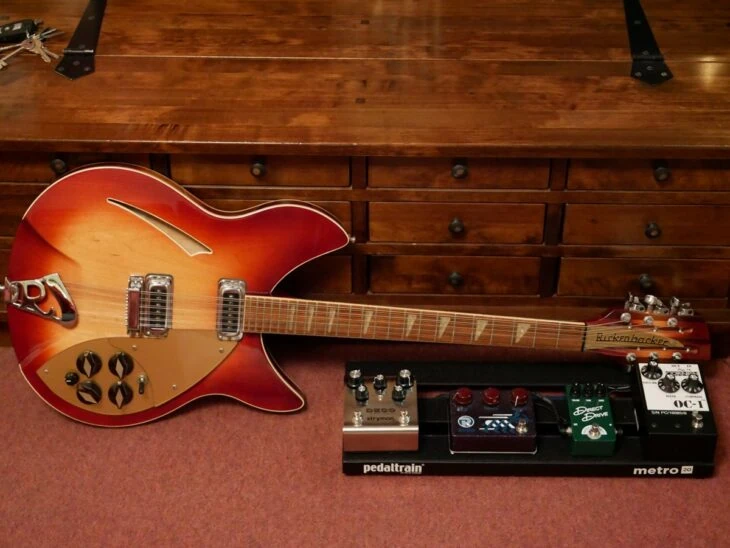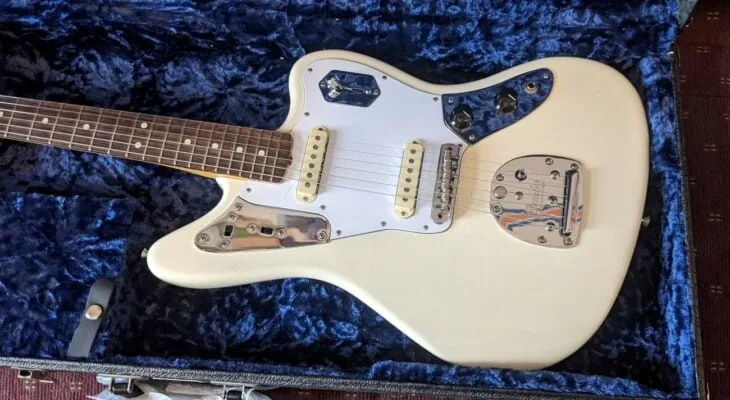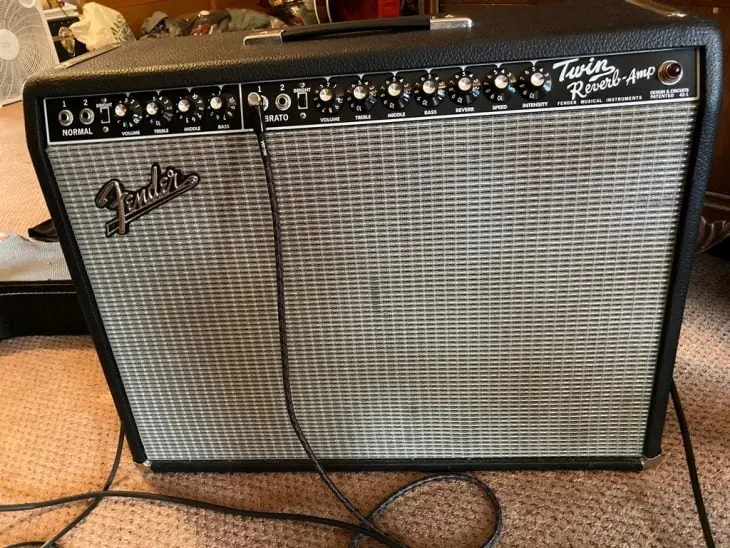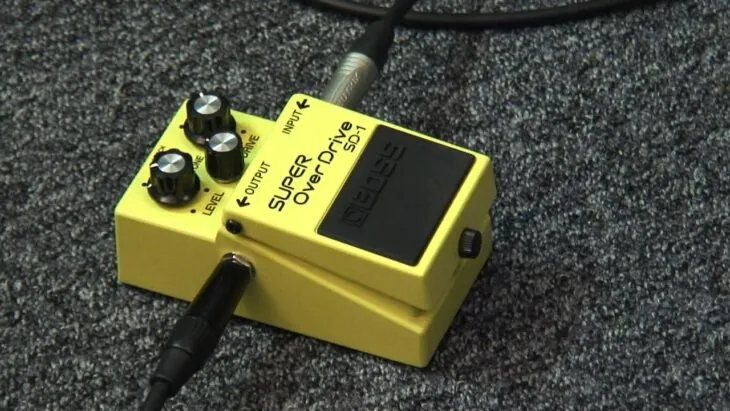Starting life as a small, independent band from Manchester, The Smiths quickly exploded onto the charts, scoring hit after hit and giving rise to a new style of music.
Their melodic, guitar, bass, and drum-focused sound stood out at a time when synth-pop dominated the airwaves. Much of The Smiths’ success can be attributed to their lead guitarist, Johnny Marr.
Marr’s iconic tone and complex riff work helped give The Smiths a unique sound that has continued to inspire new music ever since their first album was released in 1984.
To help you achieve Marr’s signature jangle-rock tone, I’m going to walk you through the guitars, pedals, amps, and settings he used on his way to securing multiple number 1 tracks.
Table of Contents
Guitars
In his 40-year career, Marr has used a plethora of different guitars.
Marr famously loved the Rickenbacker 330 which helped define The Smiths’ early, iconic jangle-rock sound. The post-’70s Rickenbackers Marr used, had new high-gain single-coil pickups which helped differentiate their sound from acts like the Beatles who’d used this guitar decades before.

However, Johnny admits to using a 1968 Fender Telecaster for the majority of The Smith’s recordings. This guitar can be heard on tracks like “This Charming Man” and “There Is a Light That Never Goes Out”.
Marr also used a 1962 Fender Stratocaster for much of The Smiths 1986 UK and US tour, as the 3 single coils gave him access to a greater tonal range while performing on stage.
His cherry red Gibson ES-335 was another guitar that became heavily associated with The Smiths in the mid to late ‘80s. If you’re on a budget, getting yourself an Epiphone ES-335 is a great way to get that Smiths tone without breaking the bank.
But, no Johnny Marr gear roundup is complete without mentioning his love for the Fender Jaguar. With more tonal range, greater tone control, and new powerful single-coil pickups, the Jaguar has been Marr’s go-to guitar since 2005.
Fender even issued a signature Johnny Marr Fender Jaguar in 2012 which came with specially voiced custom Bare Knuckle pickups and a four-position blade switch.

Tuning
For most of his live shows and studio recordings, Marr used standard E tuning (E A D G B E), however, he has been known to tune his guitar a whole step up to an F# tuning (F# B E A C# F#).
Amps
When it comes to amps, Marr is a lot more loyal, having used mostly Fender amps throughout his career.
When recording and touring with The Smiths, Marr used a Fender Twin Reverb, a Deluxe Reverb, and a Fender Bassman head and cabinet stack.

When he did stray away from Fender, he used the Vox AC30 or the Roland JC-120, two amps known for their jangly sound and high-quality onboard effects.
Johnny Marr Amp Settings
Marr’s tone can be summed up with one word: jangle-rock. With both The Smiths and throughout his solo career, Marr has kept that clear, airy, and bright guitar tone that helped give birth to modern indie rock and bedroom pop.
Here’s a good starting point if you’re looking for that basic Johnny Marr lead sound that’s jangly enough to get you rocking along to The Smiths, but still gives you enough room to play with effects down the line.
Gain: 2.5 – Marr’s sound is clean and airy, and while this may seem low for lead guitar, trust me. Lowering the gain will improve note clarity and helps maintain articulation when we start layering effects onto the mix as Marr did.
Bass: 2 – The aim when trying to replicate Marr’s tone is to fill the high/mid-range frequencies, so we want to turn the bass down low. Too much bass muddies the track and will ultimately make effects lose clarity and punch.
Mids: 7.5 – Crank that dial and make your guitar as clear and defined as you can get it. As a lead guitarist, Marr needs to be almost separated from the rest of the mix, and upping the mids does this by clearly defining the notes.
Treble: 5.5 – Since we’re getting the bulk of our clarity and definition from the mids, we want to be conservative with the treble. Keeping it low will give us a small boost of brightness and presence without overwhelming the track.
This Charming Man
Before we get to amp settings, we need to make sure we have everything set up correctly with the rest of our gear. To match the studio recording, you’ll need to tune your guitar to A = 429Hz instead of the standard A = 440Hz.
Marr also uses some light reverb, a chorus pedal, and the tiniest bit of overdrive just to give his tone a little grit, so play around with those settings if you feel like you’re struggling to replicate his sound.
Gain: 3
Bass: 2.5
Mids: 7.5
Treble: 5
Heaven Knows I’m Miserable Now
This is one of those tracks where Marr tuned up a whole step to F# tuning. If you’re not confident doing that, you can get the same results by putting a capo on the second fret.
Again Marr used a little reverb and chorus to give it that warbly sound, but amp wise we aren’t changing too much, as we want to keep that clarity, definition and high-end we’ve already got.
Gain: 2.5
Bass: 2
Mids: 7.5
Treble: 6
Easy Money
For his solo work, Marr makes use of a much grittier and overdriven tone than we’re used to. We’ll need to up the gain as well as give the bass a little push since he is relying less on effects and going for a more traditional rock sound.
The mids come down a little but the treble stays put, as we don’t wanna lose too much clarity.
Gain: 5
Bass: 3.5
Mids: 5
Treble: 5.5
Pedals
Johnny Marr was an avid pedal user, and incorporated a lot of effects into his work with The Smiths. When the band toured in 1985, Marr was seen using the Boss Chorus CE-2 pedal extensively.
When his in-amp settings weren’t enough, Marr made use of a Fender Santa Ana Overdrive pedal, however, if you’re on a budget, you could use the Boss SD-1 Super Overdrive, as Marr did in his early days with The Smiths.

To get his iconic sound Marr also used the original Boss RV-2 and the BF-2 Flanger. Since Boss discontinued both pedals, you’ll need the RV-6 and the BF-3 to get similar tones.
A Timeless Tone
Despite lasting less than a decade, The Smiths’ impact on music has been huge.
Marr’s guitar work especially has stood the test of time thanks to his innovative use of effects and complex but melodic riff work that helped the band standout at a time when jangle-rock was gaining popularity.
So much of today’s modern bedroom pop and indie rock scene can trace ideas about tone and composition back to Marr’s work with The Smiths, making him a truly timeless influence in the guitar world.
With the information I’ve shared, now’s the perfect time to get started for yourself, replicating this iconic tone and playing along to some timeless classics. Enjoy!

